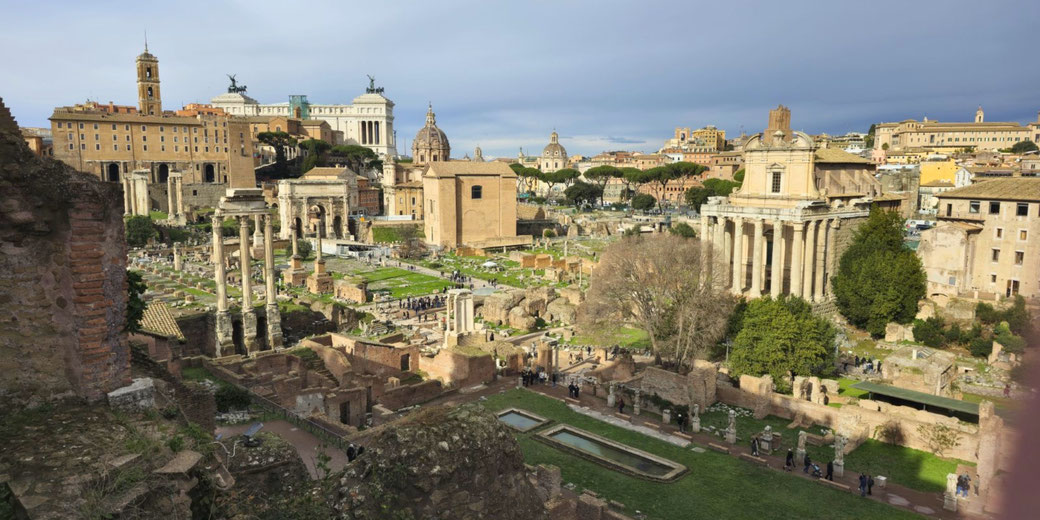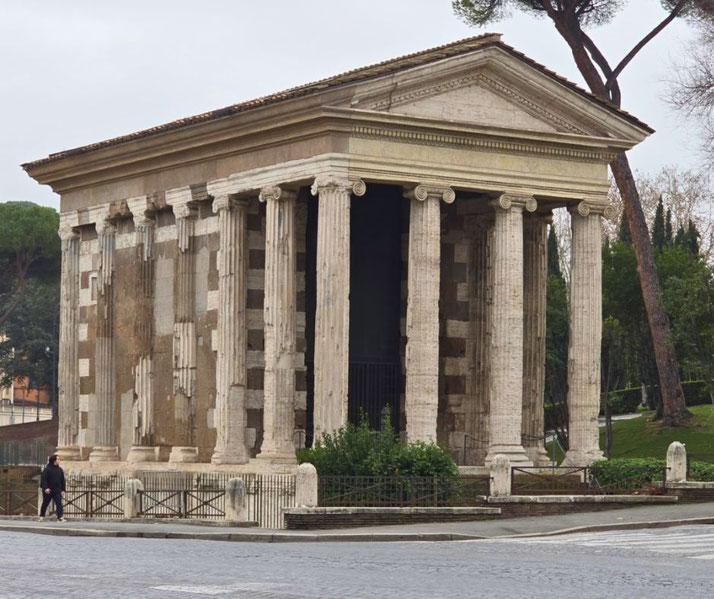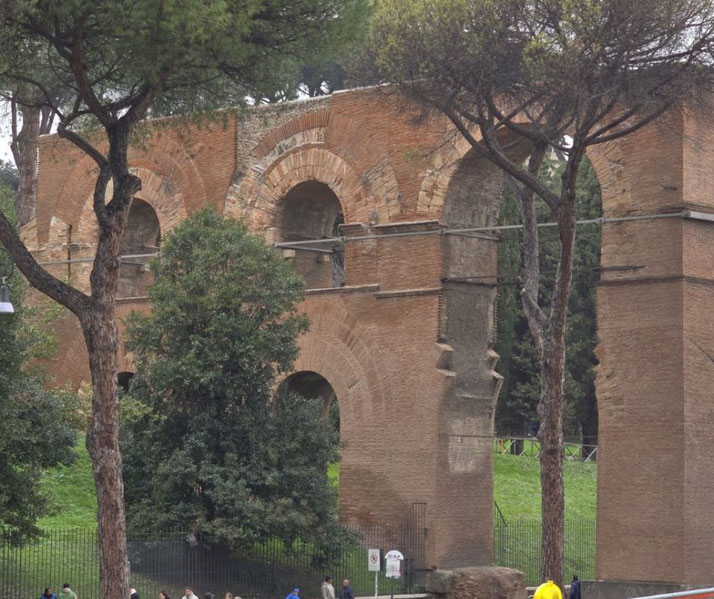What have the Romans ever done for us? The legacy of ancient Rome on the modern world

The phrase "What have the Romans ever done for us?" is often used humorously, but it poses a question worth serious consideration.
The Roman Empire, which spanned from 27 BCE to 476 CE, was one of the most powerful and enduring civilizations in history.
Its influence is still felt today in various aspects of our lives, from language and law to architecture and engineering.
1. They are responsible for how we talk...
The Latin language, which was the official language of the Roman Empire, has had a profound and lasting impact on the development of modern languages and literature.
Latin served as the lingua franca across the vast Roman territories, facilitating communication and governance.
Its influence didn't wane with the fall of the empire; instead, it became the language of the educated elite, the Catholic Church, and the sciences.
This ensured its survival and continued influence throughout the Middle Ages and the Renaissance.
The Romance languages—Italian, French, Spanish, Portuguese, and Romanian—evolved directly from Latin.
These languages share a significant portion of their vocabulary, grammatical structures, and even idiomatic expressions with their ancient predecessor.
But Latin's influence extends beyond the Romance languages. English, although a Germanic language, has been significantly shaped by Latin.
Many English words, especially those related to law, medicine, science, and philosophy, have Latin roots.
Phrases like "et cetera," "verbatim," and "quid pro quo" are directly lifted from Latin, testifying to its enduring presence in everyday vocabulary.
Latin literature, too, has had a lasting impact. Works by Roman authors like Virgil, Cicero, and Ovid have been studied and revered for centuries.
They laid the groundwork for epic poetry, oratory, and lyricism, influencing writers throughout history.
Virgil's "Aeneid" was not just a national epic but also a template for the literary epics that followed, from Dante's "Divine Comedy" to Milton's "Paradise Lost."
Cicero's orations and essays shaped rhetorical theory and practice, becoming essential reading for public speakers and statesmen.
Ovid's "Metamorphoses" influenced a wide range of artistic endeavors, inspiring poets, playwrights, and even painters.
2. They have taught us what is 'right' and 'wrong'...
The Roman Empire's contributions to law and governance are foundational to the way many modern societies operate.
The Roman legal system was a complex and sophisticated structure that dealt with a wide range of issues, from property rights and contracts to criminal justice.
One of its most enduring principles is the concept of "jus civile," or civil law, which governed the rights and responsibilities of Roman citizens.
This was complemented by "jus gentium," the law of nations, which applied to interactions between Romans and non-Romans.
These legal frameworks were meticulously documented, setting a precedent for codified law that many nations follow to this day.
The Romans were pioneers in the concept of legal equality and the rule of law.
The idea that all citizens should be treated equally under the law was revolutionary at the time and has been a cornerstone of many legal systems since.
The principle of "innocent until proven guilty" is another Roman legal innovation that has become a fundamental tenet of modern criminal justice systems.
The Romans also introduced the concept of "legal personhood," which allowed organizations like guilds and municipalities to have legal rights and responsibilities, a concept that has evolved into modern corporate law.
The Roman Republic, which preceded the Roman Empire, was a significant experiment in governance that has influenced political systems for centuries.
It was one of the earliest examples of a government system featuring separation of powers, a concept that has become a staple in modern democracies.
The Roman Republic was divided into the executive, represented by two consuls; the legislative, represented by the Senate and the popular assemblies; and the judicial, represented by various magistrates and courts.
This tripartite system was designed to prevent any single individual or body from accumulating too much power, thereby maintaining a balanced and fair governance structure.
The Roman Senate, in particular, has served as a model for legislative bodies worldwide.
Its role in advising the executive, debating policy, and representing the interests of various social classes has been emulated in countless parliaments and congresses.

3. Thank the Romans for your house and roads...
The Romans were unparalleled master builders whose architectural and engineering feats have stood the test of time, influencing countless generations of builders, architects, and engineers.
One of their most significant contributions was the development and widespread use of concrete.
By mixing volcanic ash with lime and water, they created a building material that was not only strong but also relatively inexpensive.
This innovation revolutionized construction, allowing for the creation of larger and more complex structures than ever before.
Concrete enabled the Romans to build monumental edifices like the Colosseum, a marvel of engineering that could hold up to 80,000 spectators and featured intricate underground passages, elevators, and trap doors.
The Romans were also pioneers in the use of architectural elements like arches, vaults, and domes.
The arch, in particular, became a defining feature of Roman architecture. It allowed for greater spans and more open spaces, reducing the need for closely spaced columns.
This had practical applications in the construction of aqueducts, bridges, and large public buildings.
The vault and the dome were extensions of the arch concept, allowing for even more expansive and grandiose structures.
The Pantheon in Rome, with its magnificent dome featuring an oculus, remains one of the most impressive and well-preserved examples of Roman engineering.
Roman roads are another testament to their engineering prowess. Built to last, these roads were carefully planned and constructed, featuring multiple layers of materials to ensure durability.
They were also remarkably straight, making travel more efficient across the empire.
The Roman road network spanned over 250,000 miles and included sophisticated features like milestones, way-stations, and even a sort of postal system.
This network not only facilitated the movement of troops but also enabled trade and cultural exchange, knitting the vast empire closer together.
Aqueducts were another Roman engineering marvel that had a profound impact on public health and urban living.
These gravity-fed water channels, often spanning great distances, supplied cities with fresh water.
The engineering challenges involved—like maintaining a steady, slight gradient over uneven terrain—were immense, but the Romans mastered them, improving both the quality of life and the longevity of their citizens.
4. The obsession with health and cleanliness...
The Romans made significant strides in the fields of medicine and public health, many of which have had a lasting impact on how societies manage healthcare and sanitation.
While they inherited a body of medical knowledge from the Greeks, Egyptians, and other ancient civilizations, the Romans were particularly adept at applying this knowledge in practical, scalable ways.
For instance, they established a variety of medical facilities, ranging from simple clinics to military hospitals.
Roman military medicine was especially advanced for its time, with dedicated medical corps and field hospitals that provided immediate care to injured soldiers, a practice that undoubtedly influenced modern military medicine.
One of the most remarkable aspects of Roman public health was their water supply and sewage systems.
The Romans built extensive networks of aqueducts to bring fresh water into cities.
These engineering marvels were not just functional but also built with a keen understanding of public health needs.
The water from the aqueducts fed into public fountains, private homes, and even public bathhouses, which were not just places for relaxation but also centers for cleanliness and hygiene.
The importance the Romans placed on public bathing in maintaining health can be seen as a precursor to modern understandings of hygiene.
The Romans also had a sophisticated sewage system, including public latrines and underground sewer networks, to remove waste from the cities.
The Cloaca Maxima, one of the world's earliest sewage systems, drained waste into the River Tiber and was an engineering feat in its own right.
These sanitation measures contributed significantly to public health, reducing the spread of diseases that were common in many ancient cities.
Roman physicians like Galen made contributions to medicine that would be referenced and respected for centuries.
Galen's understanding of anatomy, although limited compared to today's standards, was groundbreaking for his time.
His theories on the circulatory system, the function of various organs, and the importance of balancing bodily fluids, or "humors," influenced medical thought well into the Renaissance.
While many of his theories have been debunked, the systematic approach he applied to medical research laid the groundwork for the scientific method.

5. The ideal of military conquest and efficiency...
The Roman military was a formidable institution, highly disciplined and technologically advanced for its time, and its influence on military strategy and organization can still be felt today.
The Roman legions, the backbone of the Roman military, were highly trained, well-equipped, and versatile, capable of responding to a variety of challenges and terrains.
The Roman military was not just about brute force; it was about strategy, discipline, and adaptability.
The legions were organized into various units with specific roles, from infantry to cavalry to engineers, creating a highly effective, coordinated force.
This level of organization and specialization is a hallmark of modern militaries.
Roman military engineering was also groundbreaking. The Romans were adept at constructing forts, walls, and other defensive structures in remarkably short periods.
The construction of Hadrian's Wall in Britain, a massive defensive fortification, is a testament to their engineering skills and their understanding of the importance of physical barriers in defense strategy.
Roman forts, often built during military campaigns, were marvels of practical design, featuring everything from barracks and workshops to granaries and defensive walls.
These structures were often built with remarkable speed, enabling Roman forces to secure new territories efficiently.
Tactics and formations were another area where the Romans excelled. The Testudo, or Tortoise formation, where soldiers would align their shields to form a protective shell around the unit, is one of the most famous Roman contributions to military tactics.
The Romans also employed a range of formations and strategies depending on the terrain and the enemy they faced, demonstrating a level of tactical flexibility that was rare in the ancient world.
Roman military writings, like those of Vegetius, have been studied for centuries and continue to be of interest to military strategists today.
These works cover everything from the importance of discipline and training to the specifics of military organization and tactics.
The Roman emphasis on discipline, training, and logistical support has been incorporated into military doctrines around the world.
6. How we think about religion and philosophy...
The Roman Empire was a melting pot of religious and philosophical ideas, a testament to its vast territorial expanse and the diverse cultures it encompassed.
Initially, Roman religion was deeply rooted in mythology and ritual, with a pantheon of gods and goddesses overseeing various aspects of life and nature.
However, what set the Romans apart was their religious tolerance and adaptability.
They often incorporated the gods of conquered peoples into their own religious practices, a policy that not only eased the process of Romanization but also enriched Roman religious life.
Temples dedicated to Egyptian, Persian, and various local deities stood alongside those dedicated to Jupiter, Mars, and Venus.
This religious pluralism set the stage for the spread of Christianity, a then-minor Jewish sect.
The Roman Empire's extensive road network and the Pax Romana— a period of relative peace and stability throughout the empire— facilitated the rapid spread of Christianity.
Initially met with suspicion and periodic persecution, Christianity would eventually find favor with the Roman authorities, culminating in its establishment as the state religion under Emperor Theodosius in the late 4th century.
This marked a turning point not just for the Roman Empire but for the entire Western world, setting the stage for the Christianization of Europe.
Roman philosophy was largely influenced by the Greeks. Stoicism, founded in Greece, found a receptive audience in Rome.
Roman Stoics like Seneca, Epictetus, and the Emperor Marcus Aurelius contributed significantly to the development of Stoic thought, which emphasized rationality, self-control, and virtuous living in accordance with nature.
These Stoic principles have had a lasting impact, influencing Christian ethics and Western philosophy.
Cicero, although not a Stoic, was another influential Roman philosopher whose works on ethics, politics, and rhetoric have been studied for centuries.
His writings introduced the Romans to Greek philosophical thought and provided a philosophical foundation for Roman legal and political theory.
Neoplatonism, another philosophical system with roots in Greece, also gained prominence in the later years of the Roman Empire.
This philosophical approach, which sought to explain the nature of reality through an intricate system of metaphysical beliefs, would later influence Christian theology and the medieval Christian mysticism.
What do you need help with?
Download ready-to-use digital learning resources
Copyright © History Skills 2014-2025.
Contact via email
With the exception of links to external sites, some historical sources and extracts from specific publications, all content on this website is copyrighted by History Skills. This content may not be copied, republished or redistributed without written permission from the website creator. Please use the Contact page to obtain relevant permission.





